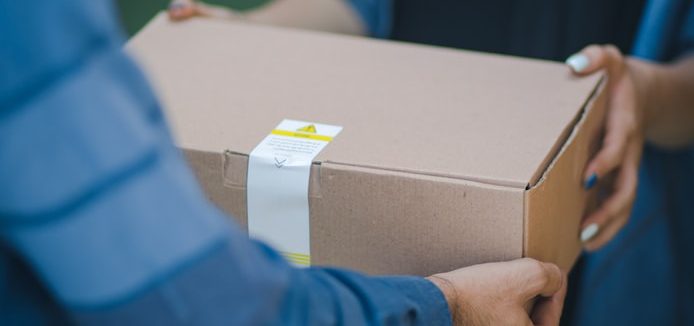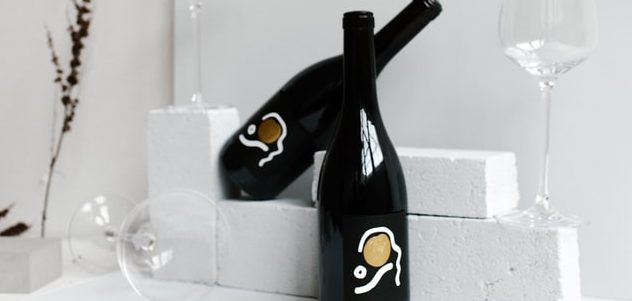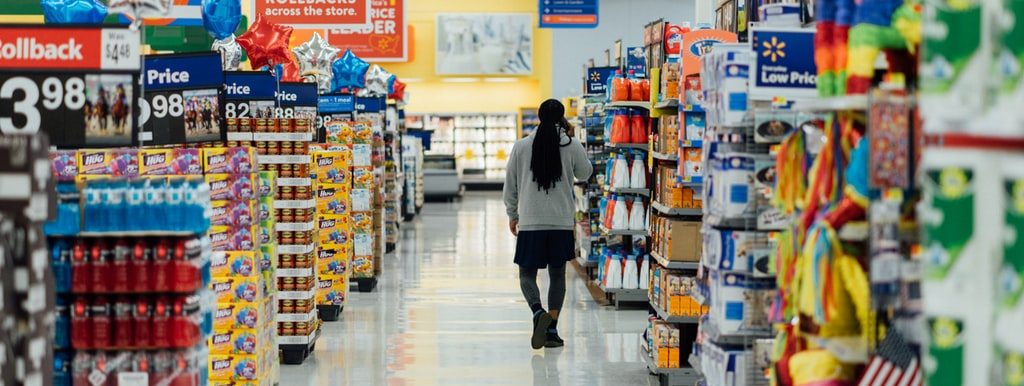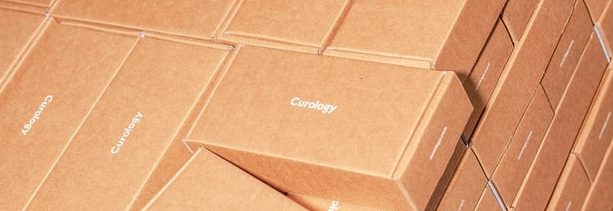1) Biodegradable packaging
Environmental concern is one of the main trends this year. Society is becoming aware of climate change, and consumers are demanding ecological products. Companies have to fulfill an ethical duty that brings them closer to this public, being an example to follow for others. That’s why using sustainable packaging is essential.
Thanks to technology, we can count on bioplastics, organic materials that resemble plastic. Cassava, potato starch, corn starch or beeswax are examples of these components.

We’ve already talked about this type of packaging in other posts, but there are cheaper options that are closer to us than we think. Cardboard boxes, for example, only take about 1 year to biodegrade, compared to 150-1,000 years of plastic. In addition, it’s the material with the least environmental impact, since it represents a reduction of up to 60% in CO2 emissions when compared to other materials. Another strong point is its recycling: the process is comfortable and easy. It only has to be folded and separated, placing it in its corresponding container. More and more companies are changing their packaging with an ecological alternative. A clear example would be Estrella Damm, who in early 2019 exchanged the plastic rings of his beer for biodegradable cardboard.

2) Reusable and returnable packaging
Within the eco-friendly movement we can find another way, apart from the one mentioned above. A trend that is growing and gaining strength is reuse. When a packaging has fulfilled its function, the ideal is to be able to use it for another purpose. As Bea Johnson, pioneer of the Zero Waste movement, says, the option of reusing must prevail rather than disposal, to try to create the minimum possible waste. That’s why, from a creative point of view, the consumer has to be able to see beyond a cardboard box, as an opportunity to create something new.
Another option to achieve a more sustainable packaging is to make it returnable. Many companies are beginning to think of collection points and use packaging that, once used, is returned to the same company for reuse. This helps to reduce the environmental footprint caused by logistics systems. According to a study by Research and Market, the use of returnable packaging will grow by 9.3% annually until 2026. Apart from being an ecological resource, it also stands out for its low production cost.

Some brands like Zalando or H&M are already studying this new business model, while other companies are already at an advantage. One example is Loop. This ambitious project is based on a online purchase method of consumer goods, similar to a regular supermarket, but with one difference: its packaging ceases to be single-use. Durable containers are used that are reused once the product is finished, since they are returned to the company to be refilled again. All this managed by a delivery system of the company itself.
3) Simple tag: say more with less
Simplicity as a trend already takes a couple of seasons in the packaging sector. Once again, users are looking for a simple, conceptual and, above all, honest design. A very common mistake is to fill a package of stickers, labels or messages that distract and stun the consumer. It’s important to remember that a brand doesn’t have to complicate life’s customer, it has to facilitate the purchase decision. An example to follow is Apple. With their minimalist and simple designs, they provide a sense of security and neatness that makes the public fall in love instantly.
We are increasingly saturated with information, so a design that conveys that tranquility is appreciated. In addition, a minimalist packaging allows you to focus on the important thing: its content. Send a direct and clear message about a product, a transparency that many consumers look for in each supermarket or store. Thanks to the packaging we can not only create a link with the client, we also generate a visual impact. A simple but aesthetic package catches the attention of consumers that, tired of having to read and decide between hundreds of products, make purchase decision in a few seconds.

Sometimes, this minimal image can lead to a feeling of sobriety and elegance, so it also provides a differential point. Many people associate sophistication with luxury. A few years ago, high-end brands were the only ones that used this style. But now, it’s no longer an exclusivity, and it becomes an advantage for those companies that decide to redesign their packaging line.
4) Branding packaging experience
Unboxing has been a growing trend in recent years. Increasingly, consumer experience is prioritized over the promotion of a product. Thanks to the expansion of ecommerce and online shopping, shipping packaging is one of the first elements of communication that a brand has in front of its customer. When a client receives the package at home, a feeling of joy and desire to open it floods him. The main objective is to conquer with the few seconds we have between receiving a package and opening it. To take advantage of these moments, it’s important that the packaging is original, creative and striking, being able to remain in the memory.

The current consumer has become accustomed to ordering their items online and waiting for them to arrive home, so they hardly have contact with the brand: they don’t visit physical stores, they don’t speak with the staff… In short, they do not have an experience. The solution? Provide this experimental value when the package reaches its destination. Thanks to the shipping packaging, you can build loyalty with the consumer and create an emotional bond.

It can be said that the online shopping experience has become a brand experience. So a well-designed shipping packaging can provide great value at the first impression, and therefore remain in the consumer’s memory.
5) New sizes
This latest trend is closely related to the Zero Waste philosophy. Increasingly, the user seeks to minimize their generation of resources, demanding products that adapts to their needs. That is why brands have adjusted to the demands of society, creating special items for each type of audience. The consumer needs containers adapted to their day to day, since a person who lives alone will have a very different reality than a large family. That’s why we see many more packs or single-person products on the shelves of stores and supermarkets.

The same goes for ecommerce packaging, where the customer expects a wide range of sizes depending on their purchases. It seeks that the boxes where items come are similar to what they occupy, since otherwise material would be wasted, generating unnecessary waste. As we have said before, environmental awareness is a growing trend, which affects and involves all areas and sectors.

In summary, packaging trends for 2020 have great ethical and aesthetic influences, but environmental above all. Now, it’s only necessary that big companies comply with these demands, making the planet a better place. It is not a matter of following the flow, but of adapting to the consumer and their needs, which change and evolve over time.

2 Responses to 5 ecommerce packaging trends for 2020